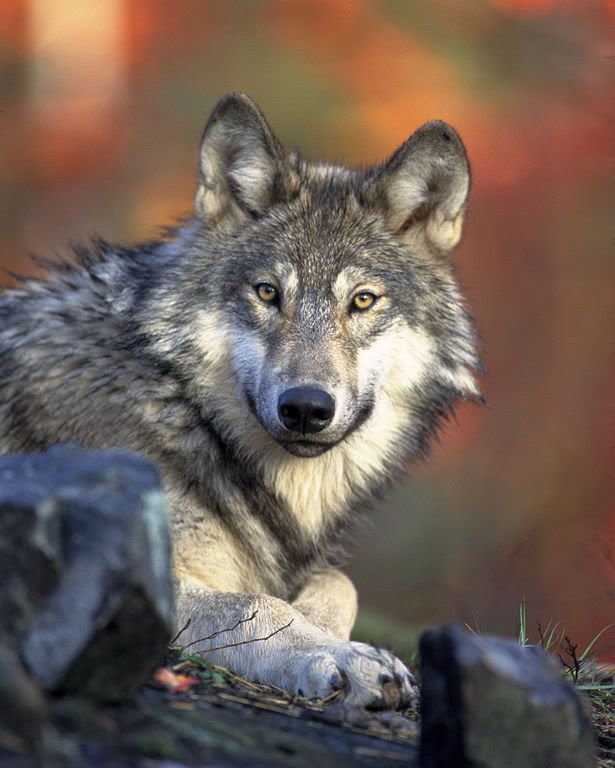Nature, Red in Tooth and Claw
Now there's a conundrum. A real headache of a decision to be made, pro or con. It shouldn't be that much of a problem, deciding whether or not to interfere with nature, in this particular instance. The simple fact is we interfere with nature constantly. Every time we expand our presence anywhere on this Globe we interfere with nature. Every time we plunder the earth of its resources, we interfere with nature.Of course we are creatures of nature, and we observe what nature does and sometimes we try to ape nature for our own good and for hers, as intelligent beings.
Here's the problem: it exists on an island in Lake Superior closer to Canada than it is to the United States, but an American possession. Because of its isolation, yet its closeness to Canada's mainland, Canadian animals have twice colonized Isle Royale, a huge island off Thunder Bay, Ontario. Since early in the 1900s, biologists have been aware that moose began populating the island, having arrived from the mainland.
 |
| Grey wolf by J. Williams |
And then again in the late 1940s a small group of wolves also crossed from Ontario when the lake froze. The island has represented a living ecology for scientists over the past half-century. Populations of predators and prey, experiencing their life-and-death cycle have been scientifically observed. The island is host to hundreds of moose, with a fairly good gene pool. On the other hand only a few dozen wolves remain, deleteriously inbred.
So much so that in poor and declining health they no longer produce offspring. And therein is the dilemma. A total of eight wolves is now left on the island, reduced from a larger pack of 40. Biologists are faced with choices; whether to allow the wolves to die off in a U.S. national park and wilderness area; or after the wolves die introduce new wolves from the mainland; or initiate a "genetic rescue" of new wolves representing fresh breeding stock.
The 74 km. long Isle Royale with its 50 inland lakes depends on the presence of the wolves to maintain a critical balance of wildlife and flora. There were no natural predators when the moose first arrived on the island, and conditions were fine enough to eventually produce three thousand moose. Who ate everything, then starved and the population crashed; affecting birds, insects, small mammals dependent on the forest that the moose had destroyed.
When the wolves arrived they kept the moose population in check. The vegetation recovered. Moose carcasses as they decay, decompose to the benefit of the vegetation, as useful compost. And the carcasses also provide food for foxes, ravens and eagles. The rule in wildlife habitants such as this is "minimal interference". Furthermore the U.S. Wilderness Act of 1964 forbids actions that will impact on the wildlife.
"The earth and its community of life are untrammelled by man, (and) man himself is a visitor who does not remain." What occurred in the past with the lake freezing, thus enabling animals to leave the mainland and access the island, no longer occurs. Because of climate change, milder winters with less lake freezing-over has resulted. So that, what nature once conspired to expedite can no longer occur.
Three biologists who study the wolves wrote in favour of keeping them on the island in some manner. "Where no place on the planet is untouched by humans, faith in non-intervention makes little sense", wrote John Vucetich and Rolf Peterson of Michigan Tech University and Michael Nelson of Oregon State. "In a world increasingly out of balance, Isle Royale is a place with all its parts"...but only with the presence of wolves.
Labels: Animal Stories, Canada, Environment, Nature, United States

0 Comments:
Post a Comment
<< Home